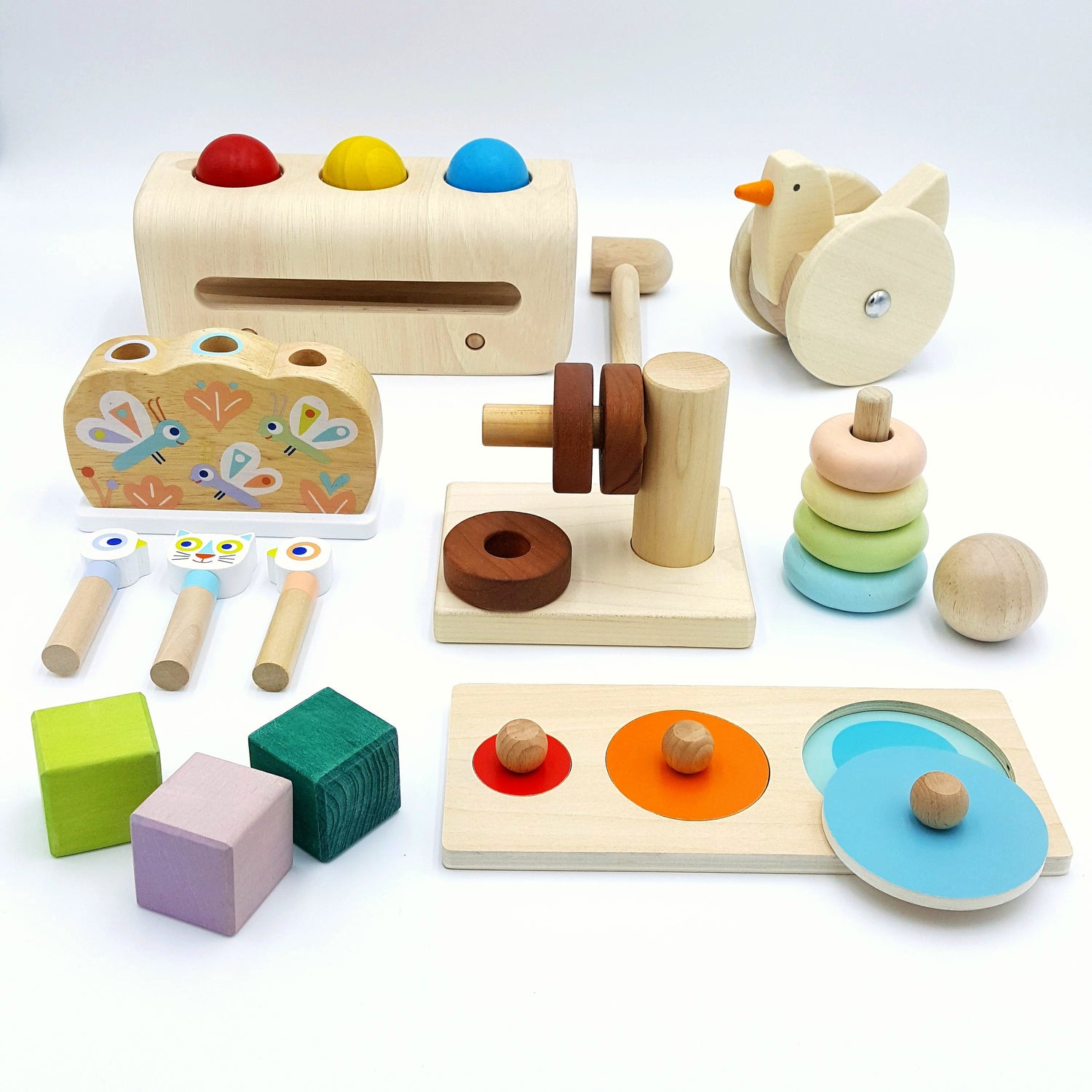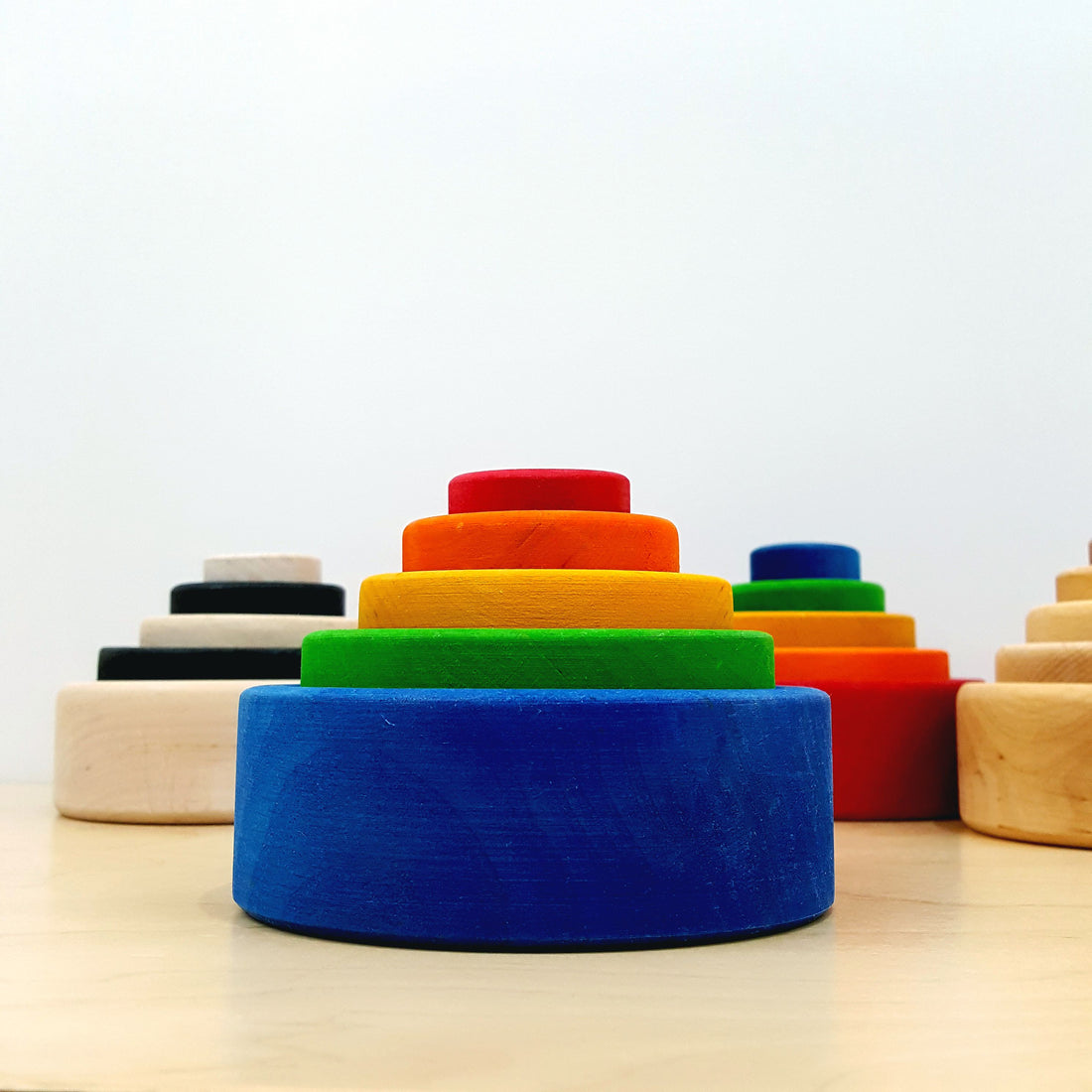Have you ever wondered what happens to our educational wooden toys after they're retired from our subscription boxes?
Something we don’t speak of often, is that we are one of the few innovative companies that are contributing to the circular economy. If you aren’t familiar with the term (and not many people are), the circular economy is, “a model of production and consumption, which involves sharing, leasing, reusing, repairing, refurbishing and recycling existing materials and products as long as possible. In this way, the life cycle of products is extended.” (Ref.)
Extending the lifecycle of toys is our main focus, and we clean and re-circulate them as many times as we can. That being said, we always have toys on-hand that are not being actively cycled through our program. As you can imagine, there are many reasons that products are retired from our toy subscription boxes, such as:
- we’ve updated our collections
- we've replaced a product with a different model
- a toy has a bit more wear, like scratches and dents, than our aesthetics standards allow for.
While these toys may not meet the needs or standards of our subscription boxes, they still have plenty of playing and learning opportunities left to offer. So, what happens to our products after they’re retired is really important.

The passion that drives me as a business owner is in operating as sustainably and ethically as possible. And while many people understand that our educational wooden toys are made without plastic and our rental model is quite sustainable, there is so much more that we are working on. Since our toys are high-quality, we pay living wages to our employees, our packaging is made sustainably and ethically, and our circular model requires two-way shipping, we are not really able to discount our subscriptions. This leads me to an ongoing challenge that I've been having with our business model: it's not entirely inclusive. It’s only available to families who have adequate disposable income.
This is why I wanted to partner with the Guelph Public Library. This partnership increases access to age-appropriate, educational wooden toys for families with diverse incomes. Guelph residents can now rent these educational wooden toys using their library card. In addition to increasing access, the partnership helps deepen our contribution to the circular economy. The library's program extends the lifespan of the toys and further reduces the need for families in our community to purchase toys new. This means that fewer toys and less packaging is ultimately headed for the landfill.

Read more about our partnership in Guelph Today news.



1 comment
Hello,
I would love to make a request for twins. I have twins & they enjoy playing together. For this reason I am not signing myself up for this program. Twins enjoy playing together but looking at some of these toys, sharing might be an issue? Would there be a program developed so twins could play together we’re there is a balance of sharing & playing?